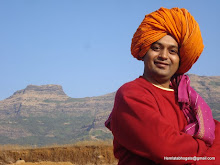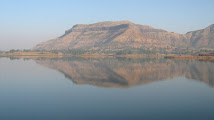The coastal line of Maharashtra is divided into North Konkan and Konkan from travelling perspective. Mumbai is the main island in North Konkan and to protect it, many forts were constructed. Out of these forts, the fort of Vasai is the significant one. One who ruled this fort, could rule over the surrounding regions of Mumbai, Thane, and Saashti. The fort witnessed the victory of Marathas under the leadership of Chimajiappa, from 1737 to 1739, against the Portuguese.
Fact File
Location: Vasai, Thane
Villages at Foothills: Vasai
Altitude: Sea Level
Latitude: 19°19'43"N
Longitude: 72°49'4"E
Best time to visit: September to April {mosmap lat='19.328664'lon='72.817796'}
topHistory The fort is comparatively small one. In 1414 Sardar Bhandari Bhendale built this fort. In 1530 Sultan of Gujratcaptured the Fort. In 1534, after knowing significance of this fort, it was conquered and reconstructed by Portuguese, which took ten years. The Fort is decagonal with bastion at each of the corner. The fort is one km length and width too. The ramparts are very strong and about 30 m high and 5 m wide. Some of the bastions are named as Bahri Buruz,
Kalyan Buruz, Phateh Buruj, Kailas Buruj, and Darya Buruj. There is the fortress in the central part. There are entrances to the fort from both seaside and landside. There are secret passages too. Lot of water is available on the fort. It is surrounded by swamp on three sides and sea on one side. There are bridges at Sopar and Gokhrava. Vasai was built with an intention to keep a watch on the region of Saashti. In 1737, the Marathas tried to capture the fort, but failed. Later Bajirao Peshwa chose Chimajiappa for the mission. He planned for it and decided to attack from swamp side of the fort. They broke the rampart on the northern side. The army broke inside roaring 'Har Har Mahadev'. Unfortunately mines burst late and many soldiers died. There was a heavy skirmish. The war started on 2nd May 1739 and took two days. 800 Portuguese lost their lives in the war. The ammunition ended and finally the Portuguese surrendered to Chimajiappa. Women and children of the enemy were allowed to go out safely without any harm.
In 1780 British started making plans to capture the fort. At that time Visaji Krishna Lele was the chief of the fort. Colonel Goddard was appointed as chief of the British army. He decided to attack the fort from both the seaside and landside. Colonel Hartley was to attack from Kalyan and Colonel Goddard from seaside. Goddard was to beleaguer the fort. Care was taken that the enemy would not get the help from Pune side. Nana Phadanavis sent Anandrao Raaste to Gokhrava village, which is 8 km away from Vasai. On 23rd October, army of Chimaji Panse and
Bhavani Shivram started for Vasai via Talegaon and were having gunnery with them. There was shortage of food and treasury on the fort. Goddard was ready with the cannons. On 28th of October he started firing. The Marathas also started firing from the bastions.
The British destroyed Gokhrava and Sopar bridges. On 7th December there was a big explosion on the fort. The war continued till 9th and 10th December. On 10th December, 200 Marathas made an attempt to pass Gokhrava, but it was unsuccessful. Finally on 10th December the British captured the fort. topAttractions It takes 15 minutes from the base village to the fort. Main entrance to the fort is to the right side. After entering we see the steps towards rampart from where we can get the idea of the construction of the fort. The height of the rampart is 30 to 35 feet. Here we can see ten bastions. There names are Nossa Sonora, Doremidea, Rais Mago, St.
Gonsolay, the fourth one being Madre the Diy. We can see secret passages in rampart near the 4th bastion. Fifth bastion is St. John, fom where there on the way to neighbouring harbour. The sixth one is Elephant; seventh one is St. Pedro, eight one St. Paul, ninth one St. Sebastian and tenth one is St. Sebastian Cavle On the way to the citadel we see three churches. When we reach near the Citadel we see a court building on the left side, then a hospital and a town hall with two arches. Next to this there is a jail and a temple of Vajreshwari Devi. We also see a memorial of victory of Chimajiappa over Vasai. Then we return back and go to the Citadel. Here we see
storeroom of ammunition, residence of soldiers and the remnants of the palaces. We also find a lithograph here.
It takes 2 hours to seethe fort completely.
topReaching there
- By Air -
The nearest Airport is Mumbai ( km away). Mumbai is well connected by international and domestic flights from all over.
- By Rail -
Vasai is the nearest railway station (barely 5 km away) from the fort
- By Road -
Arnala fort is just 5 km off the Vasai railway station on the Western Railway route. Regular buses and six-seater autorickshaws ply between Vasai and the fort.
topBus Timings
The ST bus plies between Vasai and fort every half an hour.
topAccommodation
No accommodation in the fort. One will have to find accommodation in various hotels available at Virar
Sunday, July 13, 2008
Vasai
Subscribe to:
Post Comments (Atom)


No comments:
Post a Comment